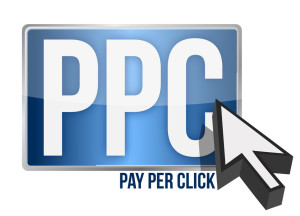What is PPC?
 Pay per click (PPC) is an internet advertising model used to direct traffic to websites, in which advertisers pay the publisher (typically a website owner) when the ad is clicked. It is defined simply as “the amount spent to get an advertisement clicked.”
Pay per click (PPC) is an internet advertising model used to direct traffic to websites, in which advertisers pay the publisher (typically a website owner) when the ad is clicked. It is defined simply as “the amount spent to get an advertisement clicked.”
With search engines, dealerships typically bid on keyword phrases relevant to their target market. PPC “display” advertisements, also known as “banner” ads, are shown on web sites or search engine results with related content that have agreed to show ads.
Websites that utilize PPC ads will display an advertisement when a keyword query matches the dealership’s keyword list, or when an other website displays relevant content. Such advertisements are called sponsored links or sponsored ads, and appear adjacent to, above, or beneath organic results on search engine results pages, or anywhere a web developer chooses on a content site.
Why Use PPC?
 Pay-per-click, along with cost per impression and cost per order, are used to assess the cost effectiveness and profitability of internet marketing. Clicks are a way to measure attention and interest. Inexpensive ads that few people click on will have a low cost per impression and a high pay-per-click. If the main purpose of an ad is to generate a click, then pay-per-click is the preferred metric. Once a certain number of web impressions are achieved, the quality and placement of the advertisement will affect clickthrough rates and the resulting pay-per-click. PPC can drive potential customers to your car dealer websites.
Pay-per-click, along with cost per impression and cost per order, are used to assess the cost effectiveness and profitability of internet marketing. Clicks are a way to measure attention and interest. Inexpensive ads that few people click on will have a low cost per impression and a high pay-per-click. If the main purpose of an ad is to generate a click, then pay-per-click is the preferred metric. Once a certain number of web impressions are achieved, the quality and placement of the advertisement will affect clickthrough rates and the resulting pay-per-click. PPC can drive potential customers to your car dealer websites.
History of PPC
In 1996, the first known and documented version of a PPC was included in a web directory called Planet Oasis. This was a desktop application featuring links to informational and commercial web sites, and it was developed by Ark Interface II, a division of Packard Bell NEC Computers. The initial reactions from commercial companies to Ark Interface II’s “pay-per-visit” model were skeptical, however. By the end of 1997, over 400 major brands were paying between $.005 to $.25 per click plus a placement fee.
Google started search engine advertising in December 1999. It was not until October 2000 that the AdWords system was introduced, allowing advertisers to create text ads for placement on the Google search engine. However, PPC was only introduced in 2002; until then, advertisements were charged at cost-per-thousand impressions. Overture has filed a patent infringement lawsuit against Google, saying the rival search service overstepped its bounds with its ad-placement tools.
Although GoTo.com started PPC in 1998, Yahoo! did not start syndicating GoTo.com (later Overture) advertisers until November 2001. Prior to this, Yahoo’s primary source of SERPS advertising included contextual IAB advertising units (mainly 468×60 display ads). When the syndication contract with Yahoo! was up for renewal in July 2003, Yahoo! announced intent to acquire Overture for $1.63 billion. Today, companies such as adMarketplace, ValueClick and adknowledge offer PPC services, as an alternative to AdWords and AdCenter.
Among PPC providers, Google AdWords, Yahoo! Search Marketing, and Microsoft adCenter had been the three largest network operators, all three operating under a bid-based model. In 2010, Yahoo and Microsoft launched their combined effort against Google and Microsoft’s Bing began to be the search engine that Yahoo used to provide its search results. Since they joined forces, their PPC platform was renamed AdCenter. Their combined network of third party sites that allow AdCenter ads to populate banner and text ads on their site is called BingAds.
Want to learn more about PPC for car dealers? – Click here.
Source: en.Wikipedia.org
